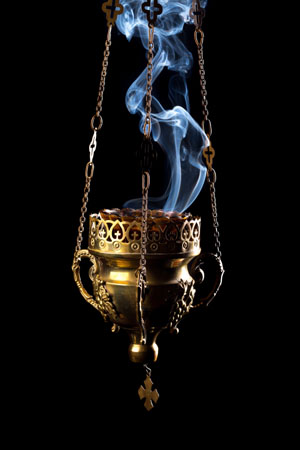Herbal Smoking – Benefits, Rules, Side Effects, Blends To Try
Herbal smoking is one of the daily routine as per Ayurveda. It helps to balance Vata and Kapha Dosha. It is used both for preventive and therapeutic purposes. The person who wishes to take care of his health should inhale herbal smoke daily to treat or to prevent the onset of diseases of the parts above the shoulders, arising from – increases of kapha and Vata.

Table of Contents
Person unsuitable for inhalation
Inhalation of smoke should not be done for persons who are suffering from
Bleeding disease like nasal bleeding, menorrhagia
Who has undergone Virechana therapy (purgation treatment)
Ascites, intestinal obstruction
Diabetes, urinary tract disorders
Blindness,
Flatulence, bloating
Diphtheria,
Who have been administered enema,
Who have just eaten fish, wine, curds, milk, honey, fats and poison;
Who are injured in the head,
Anemia and jaundice and
Those who have kept awake at night.
Proper time for herbal smoking
After sneezing
After yawning
After defecation
After urination
After having sex
After surgical operation
After bouts of laughing
After brushing teeth
After taking bath
After having food
After vomiting
Method of herbal smoking
The patient should sit straight, attentive, with his mouth open and inhale the smoke through each nostril alternatively,
While inhaling from one nostril, he should close the other.
Inhalation should be done thrice – inhaling the smoke and letting it out together forms one bout;
Three such bouts should be done each time.
Smoke should be inhaled through the nose first if the imbalanced Doshas are localized in the nose and head.
When the Doshas are localized in the throat – inhalation should be done first by the mouth and later by nose.
The smoke inhaled (either from mouth or from nose) should be let out only through the mouth; if let out through the nose, it produces loss of vision.
Smoking should be done thrice, with three times inhaling and three exhaling alternately.
Herbal smoking blends
You can use any of the following available herbs / combination of herbs
Aguru, Guggulu, Musta, Sthauneya, Shaileya, Nalada, Usheera (Vetiver), Valaka, Varanga, Kounti, Madhuka, Bilvamajja, elavaluka, Shrivestaka, Sarjarasa, Dhyamaka, Madana, Plava, Shallaki, Kumkuma (Saffron), Masha (black gram), Yava (Barley), Kunduruka, Tila (sesame seed), oil obtained from fruits and pith of trees, fat, Marrow, muscle- fat and ghee.
Herbs mentioned by Charaka
Harenuka (Pisum sativum Linn),
Priyangu – Callicarpa macrophylla Vahl.
Prithvika ( Nigella sativa Linn),
Keshara ( Mesua ferrea Linn),
Nakha – Capparis sepiaria,
Hrivera (Pavonia Odorata Willd),
Chandana( Sandalwood),
Patra ( Cinnamomum tamala Nees and Eberum ),
Twak ( Cinnamon)
Ela – Cardamom
Usheera – Vetiver,
Padmaka – Wild Himalayan Cherry – Prunus cerasoides
Dhyamaka (Cymbopogon Schoenathus Spreng ),
Madhuka – Licorice – Glycyrrhiza glabra
Mamsi – Nardostachys jatamansi
Guggulu (Commifora mukul Engl.),
Aguru (Aquilaria agallocha Roxb. ),
Sharkara (Sugar),
Bark of Nyagrodha (Ficus bengalensis Linn),
Udumbara (Ficus racemosa Linn),
Ashvattha (Ficus religiosa Linn),
Plaksha (Ficus locor Bunch- Ham),
Lodhra (Symplocos racemosa)
Vanya (Cyperus tenuiflorus),
Sarjarasa (Resin of Vateria indica Linn).
Musta (Cyperus rotundus)
Shaileya (Permellia perforta),
Kamala (Nelumbo uncifera Gaertn),
Utpala (Nymphaea alba),
Shrivestaka (resinous extract from Pinus roxburghii Sargent ),
Shallaki (Boswellia serrata Roxb.).
Simple herbal smoke combination
Here are a simple combination that can be tried.
Take Guggulu, pound it well. Add neem, turmeric, saffron and black gram. Make it into the form of a wick. Add ghee for lubrication. If you burn this wick, it should easily catch fire and yield smoke.
If guggulu is not available, you can simply make the combination using the other herbs, as per availability, put on a hot pan and inhale the smoke.
Herbal smoking for asthma
As per master Charaka, a wick prepared with powder of barley along with ghee is useful for Dhoomapana in case of Asthma. (Charaka Chikitsa Sthana 17th chapter).
Another method of herbal smoking – A burning coal / charcoal is placed inside an earthen pot. Powder of herbs is sprinkled over it and covered with another vessel, having a hole at its center. A tube is connected to the hole, through which the smoke is inhaled.
Signs of proper herbal smoking
Clarity of mind, clarity in thinking process
Clarity in throat, abscess of mucus collection in throat
Clarity in sense organs,
Lightness of head
Benefits of smoke therapy
Cough, Dyspnoea, Rhinitis, Disorders of voice, bad smell – of the nose and mouth,
Pallor of the face, disorders of hairs, hair loss,
Discharges, itching, pain in ear and nose,
Loss of function of the ears, mouth and eyes;
Headache, migraine, eye pain,
Toothache, excess drowsiness,
Strengthens sense organs, excess sleep,
Stupor and hiccup do not affect the person who inhales smoke- habitually.
Side effects of herbal smoking
Doing Dhumapana at improper time or in excess leads to
bleeding disease,
blindness,
deafness,
excessive thirst
fainting, loss of consciousness
delusion.
You can see that all these are symptoms of Pitta increase.
For this, cold regimen should be adopted.
Signs of insufficient smoking
Impairment of voice, presence of Kapha (phlegm) in the throat and heaviness of head are the features of insufficient smoking.
Signs of excessive smoking
If one smokes in excess, his palate, head and throat gets dried up and become hot. One feels thirsty and he becomes unconscious; there may be excessive bleeding, dizziness. fainting and hotness in sense organs.
Treatment of complications
If such troubles due to untimely and over smoking arise, you need to consult an Ayurveda doctor immediately. Here are a few treatment options:
Intake of ghee – this helps to relieve burning sensation, and excess of dryness caused due to wrong herbal smoking.
Administration of Nasya (nasal drops) – with oils like Anu Tailam – helps to soothe the inflamed nasal mucosa, also helps to strengthen sense organs.
Collyrium and demulcent drinks are prescribed.
The medicines should be of unctuous drugs in the event of vitiation of Vata Dosha (associated with pain)
If the symptoms are associated with Pitta (burning sensation) then herbs of cooling nature should be selected for treatment.










19 comments
govind1008
It would help me if you could illustrate the process and picture the herbs, mixed in what proportions? I may ask my vaidya if this is good for me. Thanks for this info. Govinda
Dr J V Hebbar MD(Ayu)Author
I will try to do that in one of my future videos.
Claire
Thanks doc, I would also like to know even more…
Dr J V Hebbar MD(Ayu)Author
Would write more in future. Please subscribe to my blog and keep yourself updated 🙂
Sujay
Dear Doctor,
Is it advisable to smoke herbal cigarettes ? Like conventional smoking only the cigarette is made with herbs.
I found one brand on internet. I wanted your views if this is good or not.
http://www.nirdosh.co.in
Dr J V Hebbar MD(Ayu)Author
Hi, if you are trying to quit smoking then nirdosh is a good alternative.
Sujay
No doctor. I used to smoke but now am a non-smoker. I have no desire to smoke tobacco cigarettes.
I am looking at Nirdosh more from a general health perspective. After reading your articles about benefits of herbal smoking, I started to think if Nirdosh might be a readily available and easy way to implementing it instead of going through the entire process of buy individual herbs, mixing, burning and doing the procedure oneself to generate smoke
Is nirdosh a good option for this purpose ?
Will smoking nirdosh cigarette give the same (or similar) benefit as following the “nasal inhalation” procedure you mentioned in your article?
Another question is on the dosage.. is it good to smoke one Nirdosh a day ?
Sujay
Thank you Doctor… your website and your responses to posts and questions are very informative and useful.
Dr J V Hebbar MD(Ayu)Author
Welcome!
Sujay
Dear Doctor,
Just another question, is there any recommended timing for smoking the herbal cigarette discussed in my questions above ?
Is it ok to use in the night before going to bed to relax and have a good sleep ?
AnshBhatt
Sir what can be the perfect Herb blend for Herbal Smoking to remedy Insomnia.
Thanks and Regards,
Anshu
Dr.archana pahil
Hello doc plz tell m the right amount of Snehal pan like ghee given to patient in banana panchkarma n for how many days.can u tell m the proportion given to patient of Madanphal ,yashtimadhu,vacha etc
Dr J V Hebbar MD(Ayu)Author
Hi, the dose of ghee is fixed based on the Koshta of the patient. It can be as little as 30 ml to 75 ml.
Read Vamana article here – https://www.easyayurveda.com/2014/10/09/vamana-therapy-right-method-side-effects-management/
Snehakarma article here – https://www.easyayurveda.com/2014/10/07/oleation-snehakarma-dose-benefits-side-effects-management/
Archana pahil
Thanx a lot doc for giving this wonderful knowledge abt ayurveda
Dr J V Hebbar MD(Ayu)Author
Hi, usually it is not used for white hair problem.
Dr J V Hebbar MD(Ayu)Author
Hi, you can mix guggulu along with cannabis. Smoke Marijuana only in small quantities per day, with good control on your mind.
Aadarsh
I can not understand the method of smoking.
Is it that i should first close one nostril and inhale through the other and then exhale through mouth and then again inhale from the same nostril two more times and exhale through the mouth both the times and then i should move to the other nostril and do it three times using that nostril and then repeat the same process two more times?
Dr J V Hebbar MD(Ayu)Author
Inhale from one nostril and exhale through the other. Then vice versa.
This can be done for 3 – 5 minutes.
It can be exhaled through mouth also, but it cannot be inhaled through mouth.